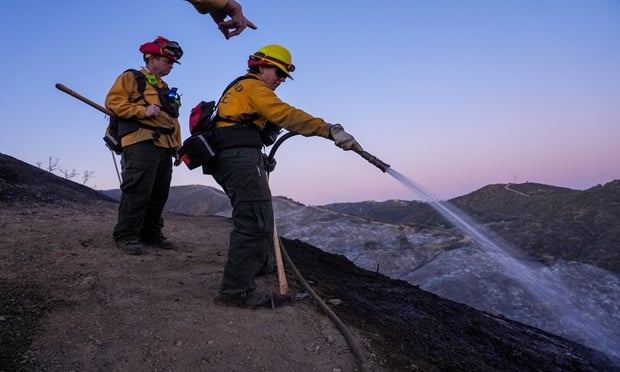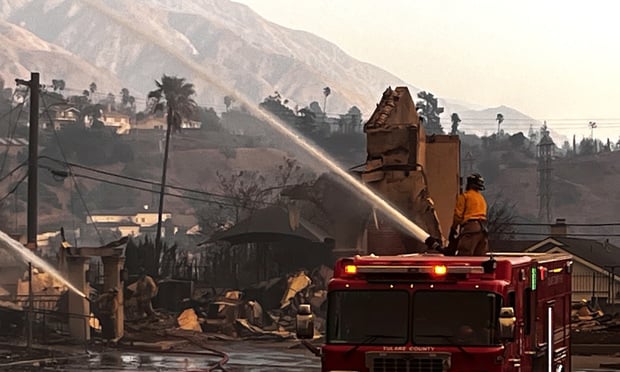Claims never seem to be routine when animals are involved. As insurance professionals told National Underwriter, animals complicate matters by chewing, devouring, stomping, or even just lying motionless. Indeed, while incidents involving animals always make a strong showing in NU's unusual claims recap, this year our furry, feathered and scaly friends stole the entire show.
Jim Redinger, principal engineer at Hartford Steam Boiler, said he has seen a number of claims where animals cause damage by getting into problematic areas. In office buildings, for example, he said claims arise when mice get into breaker panels. “It doesn't seem like a big deal,” he said, but he noted that the ensuing damage they cause could short out the breaker box, meaning everything attached stops working.
 Mr. Redinger said the claim will generally begin with a report that “something is wrong with the breaker box.” During the investigation, he said, an adjuster will find that a mouse, lizard or snake made its way into the back of the breaker box, past wires and switches. The animals will chew on wires, urinate, or otherwise cause a mess, prompting shorts.
Mr. Redinger said the claim will generally begin with a report that “something is wrong with the breaker box.” During the investigation, he said, an adjuster will find that a mouse, lizard or snake made its way into the back of the breaker box, past wires and switches. The animals will chew on wires, urinate, or otherwise cause a mess, prompting shorts.
Mr. Redinger said these types of losses do not happen often but can result in severe equipment breakdown and property issues when they do occur.
For loss control, Mr. Redinger said insureds should make sure panels are properly secured. He said animals usually get in when a person takes the panel off and, for example, does not put the screws back in when replacing it.
Additionally, Mr. Redinger said insureds can update their breaker boxes. Most modern approved ones, he noted, are completely enclosed, and animals cannot get into them if the boxes are properly installed and maintained.
As damaging as little critters chewing on wires can be, big critters chewing on them can be even worse. Mr. Redinger said he has seen farm-related claims where pigs and goats chew through electrical wires, causing damage to equipment and animals alike. If the animals are in a wet environment, he noted, the one doing the chewing and those around it risk electrocution.
Most farmers, he said, understand that pigs and goats will chew anything within their reach, so such animals are typically well-confined away from wiring.
But Mr. Redinger said he reminds underwriters that farmers tend to make a lot of repairs themselves, and sometimes less-than-ideal temporary fixes become permanent solutions. If that makeshift fix involves, for example, an extension that is run within the reach of farm animals, they may chew it and cause damage.
Sometimes, animals get their mouths on things more expensive than wires.
“Several years ago I had a call from a lady asking if her policy would cover a lost earring,” recalled Jerry Zenke, of Minnesota-based Mound Prairie Mutual Insurance Company. “When I asked how it was lost, she stated she had befriended a wild Canadian goose, and while it was sitting on her lap it grabbed one of her diamond earrings and swallowed it. She explained that she had penned it up in her garage for the past two weeks and had been going through its excrement the whole time and found nothing.”
Unfortunately for the insured, the claim was not covered, Mr. Zenke explained, as there was no special coverage on the earrings. “I did tell her that if the bird was dissected, the earring could probably be found in its crop located in its neck. She declined to do such a thing, and as far as I know the bird flew south with her earring intact that fall,” he noted.
Claims adjuster Jason Altmann had likely seen just about all there is to see as far as destruction wrought after natural disasters. As part of MetLife Auto & Home's National Catastrophe Team, he had traveled the country for years, inspecting properties and helping to reach out to customers during times of severe crisis, such as after a hurricane or tornado.
But an unwelcome resident in a home in New Orleans after Hurricane Katrina proved that when it comes to such large-scale disasters, always expect the unexpected.
 “We were in St. Bernard parish, and I was contacted to inspect and adjust an insured house, located near the canal,” Mr. Altmann recalled. “I arrived with an independent appraiser, who was along to assist with the adjustment process. As I approached the front door, I looked down and jumped back. There in the doorway was what looked like a live alligator, measuring four or five feet in length.”
“We were in St. Bernard parish, and I was contacted to inspect and adjust an insured house, located near the canal,” Mr. Altmann recalled. “I arrived with an independent appraiser, who was along to assist with the adjustment process. As I approached the front door, I looked down and jumped back. There in the doorway was what looked like a live alligator, measuring four or five feet in length.”
Mr. Altmann said he called for the other appraiser, and they poked the motionless alligator with a stick to see if it was alive. It didn't move. “Still,” he pointed out, “not moving isn't the same as actually being sure 'Junior' was dead.”
He and the other appraiser flipped a coin to see who would have to go past the alligator and inside the home. Mr. Altmann lost the coin toss. “I have to admit, I was a little nervous as I stepped over the alligator to enter the house,” he said. “First off, because I didn't want him snapping at me, but also, I was concerned he might not be alone. I was pretty sure he wasn't the only alligator in that canal.”
He concluded that “fortunately, I got past him without incident and completed a thorough inspection of the property and home. I'm glad, too, because had I seen an alligator inside the house, I may have lost it. The rooms we were inspecting were poorly lighted and the floors and walls were covered with around six inches of mud. We had been warned about snakes and bees in advance, and in other properties, I did see a few snakes resting on dressers five or six feet in the air, or on couches. From then on, though, I was personally more concerned about alligators.”
Finding an unwanted animal guest that wanders into a house on its own is one thing, but when the animal is placed there intentionally as a prank, the resulting damage can raise some interesting questions of coverage.
Linda Bassett-Coleman, a producer at Texas-based Galveston Insurance Associates explained: “About 10 years ago, my nanny called me at the office to ask me if damages caused by a dog would be covered under her Texas HO B homeowners insurance policy. At first I thought she was talking about damages to her home caused by her own dog, until she told me the story.”
The nanny was at the grocery store while her grown son, who worked nights, was asleep at the house. Someone entered the home and, as a prank, managed to get a 100 pound dog up a set of pull-down ladder steps and up into the attic, locking the animal inside.
“Of course it was summer in the South and hot in that attic,” Ms. Bassett-Coleman said, “and when the nanny came back from the store, that dog must have heard her and started running around in her attic trying to find a way to get out or to get her attention. Well, needless to say it got her attention because her attic was not floored, so every time one of those 100-pound-backed dog feet hit the drywall ceiling, a leg went through the drywall making holes in every ceiling in her home.”
The nanny pulled the attic steps down to see what was going on in attic. “About the time the steps came down, so did the dog, except through the drywall of her living room ceiling between the rafters,” reported Ms. Bassett-Coleman. “The dog landed with a thud, looked at the nanny and shot out of the front door that still stood open from the nanny coming in with the groceries.”
The claim turned out to be a covered loss, Ms. Bassett-Coleman noted. “At that time, the policy read that damages were not covered if they were caused by your pet–not some other pet that did not belong to the insured.”
Want to continue reading?
Become a Free PropertyCasualty360 Digital Reader
Your access to unlimited PropertyCasualty360 content isn’t changing.
Once you are an ALM digital member, you’ll receive:
- Breaking insurance news and analysis, on-site and via our newsletters and custom alerts
- Weekly Insurance Speak podcast featuring exclusive interviews with industry leaders
- Educational webcasts, white papers, and ebooks from industry thought leaders
- Critical converage of the employee benefits and financial advisory markets on our other ALM sites, BenefitsPRO and ThinkAdvisor
Already have an account? Sign In Now
© 2025 ALM Global, LLC, All Rights Reserved. Request academic re-use from www.copyright.com. All other uses, submit a request to [email protected]. For more information visit Asset & Logo Licensing.








